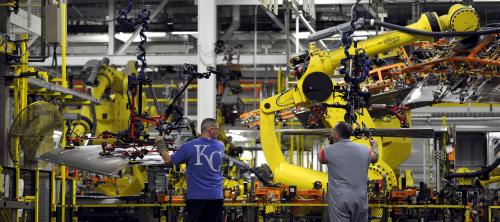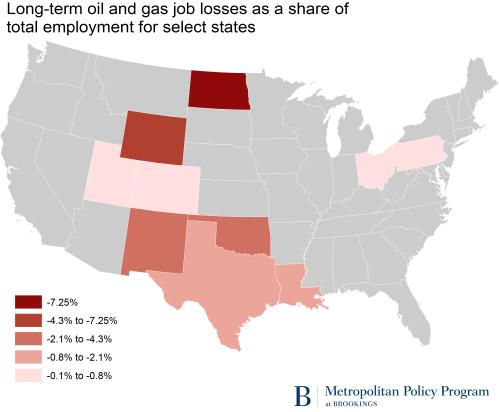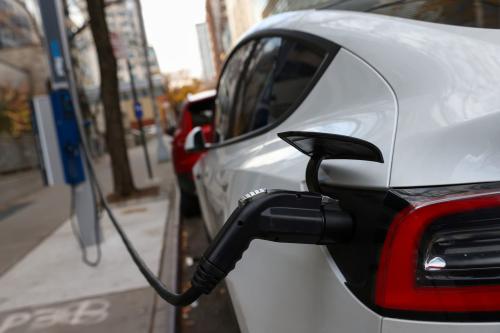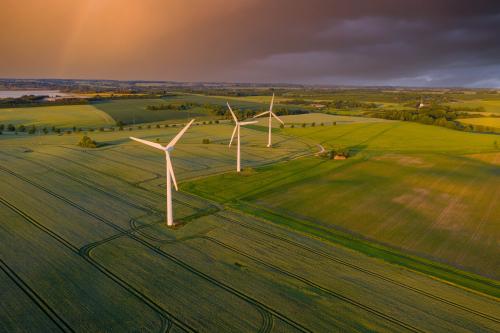President-elect Donald Trump has pledged to revive the coal industry and bring back coal mining jobs with fewer regulations and better trade deals. However, Trump’s vision of a revived coal industry that offers plentiful new jobs may remain just that: a vision.
No one can deny the problems in the coal industry that Trump claims he will address. Coal production has plummeted to levels not seen since the early 1980s. The average number of employees at coal mines has decreased 12 percent to 66,000 employees, the fewest since 1978. And, the industry has been plagued by a series of bankruptcies.
However, Trump is ignoring the real reasons behind the industry’s struggles. In doing so, he is making unrealistic promises to revive a dying industry.
Since 2000, a series of market forces—the shale gas revolution, which has eroded coal’s price advantage; cost reductions in renewable energy technology; the overall flat demand in the power sector; shifts in global demand for coal; and declining coal mine labor productivity—have all contributed to coal’s decline, likely more so than government regulation.
Let’s look at each of these market forces in detail.
The decline in coal’s fortunes is largely a result of competition from cheap and abundant natural gas, which was freed in soaring volumes during the last decade due to technological advancements in horizontal drilling and hydraulic fracturing. The utility industry, motivated by profit and a desire to keep costs low, has been shifting significantly from coal to natural gas. In 2000, coal accounted for 51.7 percent of electricity generation, compared with just 15.8 percent for natural gas. By 2015, coal’s share had dropped to 33.2 percent, while natural gas rose to 32.7 percent of total generation. The Energy Information Administration predicted in March that natural gas’ share of the electricity market would surpass coal for the first time in 2016, a trend likely to pick up pace as long as natural gas prices remain low. To keep his promises of reviving the coal industry, Trump will have to figure out a way to increase the price of natural gas.

While cheap natural gas has inflicted the most damage on coal, renewable energy—including wind and solar—has also contributed to a shift away from coal in many parts of the United States. The cost to build a utility-scale solar photovoltaic plant has fallen by about 80 percent since 2009, while wind project costs have dropped by 60 percent. As a result, large solar and wind farms can compete in the power market even with low natural gas prices. The entry of renewable energy projects into the market is leading to a reduction in coal-fired generation in many places, including deep red states. For instance, Iowa and Kansas get 30 percent and 21 percent of their electricity from wind, respectively, and Texas has added more wind-based generating capacity than any other state. Many studies (see here and here) have noted that renewable energy development is poised to grow significantly, even in the event that the Clean Power Plan is not implemented. The levelized cost of electricity (LCOE)—or how much money it takes to produce one megawatt-hour (MWh) of electricity from a particular source—shows that wind and solar have become increasingly cost- competitive with coal, even on an unsubsidized basis.

Third, GDP growth and electricity consumption in the United States have become decoupled. Total electricity sales dropped 1.1 percent in 2015, marking the fifth decline in the previous eight years. A combination of factors—including significant uptake in energy efficiency investments, the growing popularity of rooftop solar, changing composition of the economy, and a slowdown in economic growth—account for declining rates of electricity demand growth. Given flattened demand, utility companies are forced to seek the lowest-cost sources of electricity to remain profitable in the face of sticky prices from unchanging demand. Because current LCOEs for non-coal sources are generally below the LCOE for coal, Trump would again have to increase prices for non-coal sources of electricity to bolster the coal industry.

Recent global shifts in coal demand do not suggest that coal’s strength lies outside U.S. borders, either. Coal exports fell for the third consecutive year in 2015, ending the year 23 million short tons (MMst) lower than in 2014 and more than 50 MMst less than the record volume exported in 2012. Some of this decrease is likely attributable to the slowdown in Chinese economic growth. The International Energy Agency forecasts that U.S. coal exports will continue to decline in the face of slowing Chinese consumption and cheap foreign competition. Greater demand from China and India, the two largest coal markets, is necessary to increase coal exports; all indications suggest that these countries will want to keep imports low for security and fiscal reasons. In short, there is little opportunity to boost the U.S. coal industry through exports.

Finally, U.S. coal industry productivity—a measure of the tons of coal that a mine produces per employee hour—has rapidly declined in the past decade, after peaking around 2000 in most coal-producing regions. Diminishing coal geology and a tendency to mine the cheapest and easiest-to-reach coal first have contributed to this trend. Declining productivity has led to increased costs and thinner profit margins for coal companies already facing headwinds from other market forces. Years of declining efficiency have reversed in the past three years, as miners have stabilized or even increased productivity at both surface and underground coal operations. However, this increase in productivity may be temporary, as production gains have likely come from closing of less-efficient mines, cost savings and lower capital expenditure rather than improved mining technology.

Together, these five long-running market forces help explain why the U.S. coal industry is in decline. Simple economics, not politics, will continue to drive the decline of the coal industry in the coming years. Reversing the trend will be next to impossible without pouring huge subsidies into the industry. Unfortunately, Trump’s unrealistic promises to save the coal industry detract from any serious conversation the nation should be having on what to do about coal workers losing their jobs and how to help them transition to new jobs in the advanced economy.
Thanks to Kevin Baier for providing research assistance on this post.
The Brookings Institution is committed to quality, independence, and impact.
We are supported by a diverse array of funders. In line with our values and policies, each Brookings publication represents the sole views of its author(s).






Commentary
Five charts that show why Trump can’t deliver on his coal promises
December 6, 2016